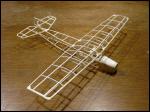Fokker F-II

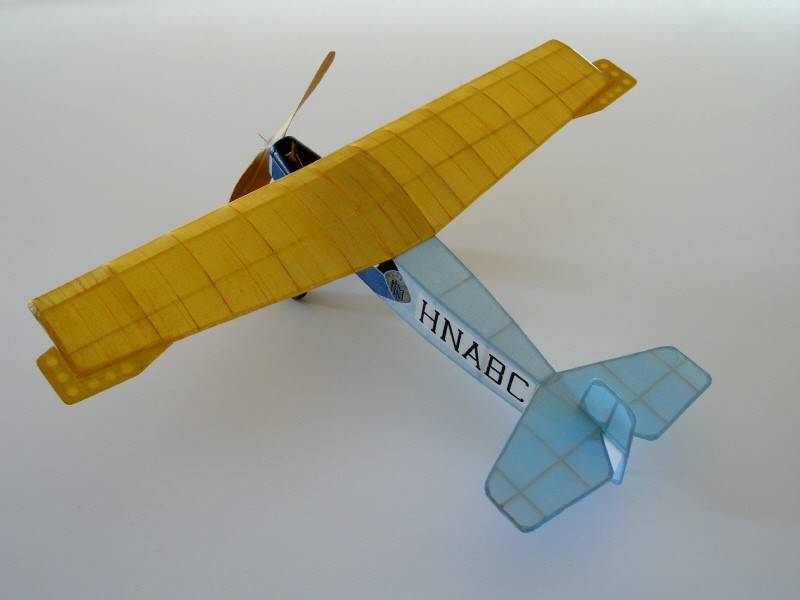
I've built this Fokker F-II for the international indoor contest in the Netherlands (IIFI 2008). Here are some pics of the project.
I used the Mooney plans, but I made a F-II with Puma engine so the nose is different.
Here is the model ready for covering. The rudder and elevator are built up instead of sheet balsa as on the Mooney plan. I added a lower spar to capture the curvature of the wing profile better. The rear spar is on a different position than on the Mooney plan, this position coincides with the position on the 3-view and also gives the top of the wing a nicer curve.
I will use printed tissue for covering, the colours will be as the full size F-II replica which is on display in the Aviodrome museum. The colour scheme of the replica is not correct when compared to the B&W pics I have, but it is a full size F-II so I think this is OK for judging purposes. It doesn't have the registration on the wing and the front of the engine cowling is silver instead of blue and/or black.
Some pics of this replica are on Airliners.net.
Construction
Here is how I did the sheeting of the nose. The exhaust will be positioned between the two 1/16 square stringers. I first glued the sides and let the glue dry. Then I wetted the balsa and folded it over the nose. When the balsa was dry I removed the overlap and glued the sheet to the structure.
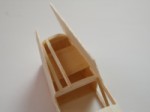 |
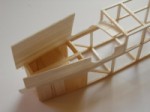 |
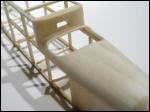 |
Pilot
The minute pilot is carved from pink foam, with arms of 1/16 balsa.
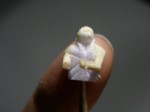 |
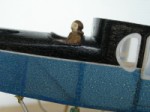 |
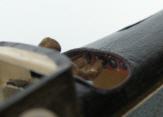 |
Covering
I covered the wing with yellow Esaki, chalked on the inside with different stripes of brown and yellow chalks. On the paper underground I glued paper strips in the position of the different plywood panels. When using chalks these strips will give a darker line on the tissue.
I smudged the chalk to blend in and it now has a nice yellow dope over wood look. For the fuse I will use printed tissue, probably chalked with white chalk to make it a bit less transparent.
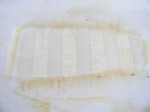 |
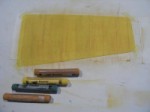 |
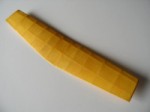 |
I printed the sides for my F-II. I used spray glue to attach the white tissue to a piece of paper. In the first try the tissue came loose, so it wrecked part of the print job. The second time I used masking tape to secure the top and bottom of the paper and all went well.
To make the printed tissue less transparent I decided to chalk the backside. I didn't want to grind to much white pastels, so I went to an art supply store to buy some titanium-dioxid white pigment. It is very white and works great!
The windows are fom 5 micron mylar, which was attached to the fuse before covering with
tissue.
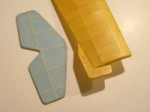 |
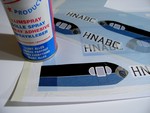 |
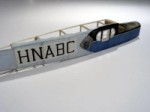 |
The exhaust, or should I say chimney, is made from 1/16 balsa and some paper.
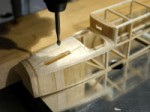 |
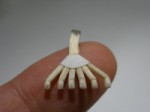 |
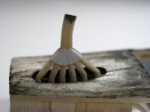 |
For the landing gear I used four pieces of grass, mounted to the fuse with a very small piece of banjo string so that part is flexible. I used Superphatic glue for the entire gear, which stays flexible forever. Between the grass there are two metal bars, also from banjo string. From fore to aft is a piece of 1/16 elastic cord. The cord is attached to the fuse by wrapping thin metal wire around the cord, which I tightened and pushed the end of the wire in the longerons of the fuse. Then I added a blob of glue to keep it all in place. The rigging is from black cotton string coated in Superphatic.
The wheels are black depron with two black paper disks.
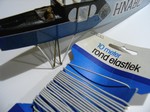 |
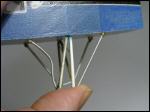 |
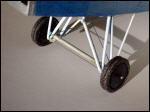 |
Flying

Some statistics:
- peanut: so the wingspan is 33 cm
- weight: 8 grams with rubber.
It needed even more down thrust than indicated on the plan to cure stalling, but after adding an extra 1/16 shim it was a very stable and relaxed flyer. On a 4" Peck prop and a loop of 1/16 it had plenty power and for indoor I need to tame the model a bit. It made several 30 second flights on 800-850 turns. This is on a 0.6 gram motor.
I flew the model at the international indoor
fly in at Nijmegen, 15 and 16 of march 2008. Here is a video
of a ROG during this contest. On the first day of the contest I used the 4" Peck prop, weighted with lead tape. Using this prop I was able to do ROG's on the contest, which gives a 10 second bonus. Best ROG flight was 37 seconds, plus bonus is 47 seconds. I used a loop of 1/16" rubber with this prop.
The second day of the contest I used a 5.5" Igra prop, reduced to 5", and a loop of 3/32" rubber. ROG's weren't possible with this prop but the flight times went up to ...... 47 seconds. Best flight using this setup was 49 seconds. With some further experimenting 1 minute might be doable?
I also used this model at the IIFI 2009, best time was now 1:07! Over a minute!
This gave the model 3rd place in flying, but because the static score is rather
low it got a 6th place in the overall score. Still better than the 9th place in
2008!
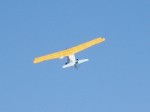 |
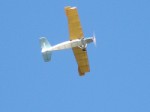 |
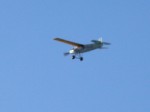 |
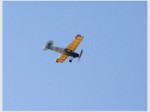 |
Interscale 2010
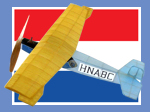
I think the Fokker will fly again in the Interscale 2010 contest, especially because the F-II is in the logo for this contest.
